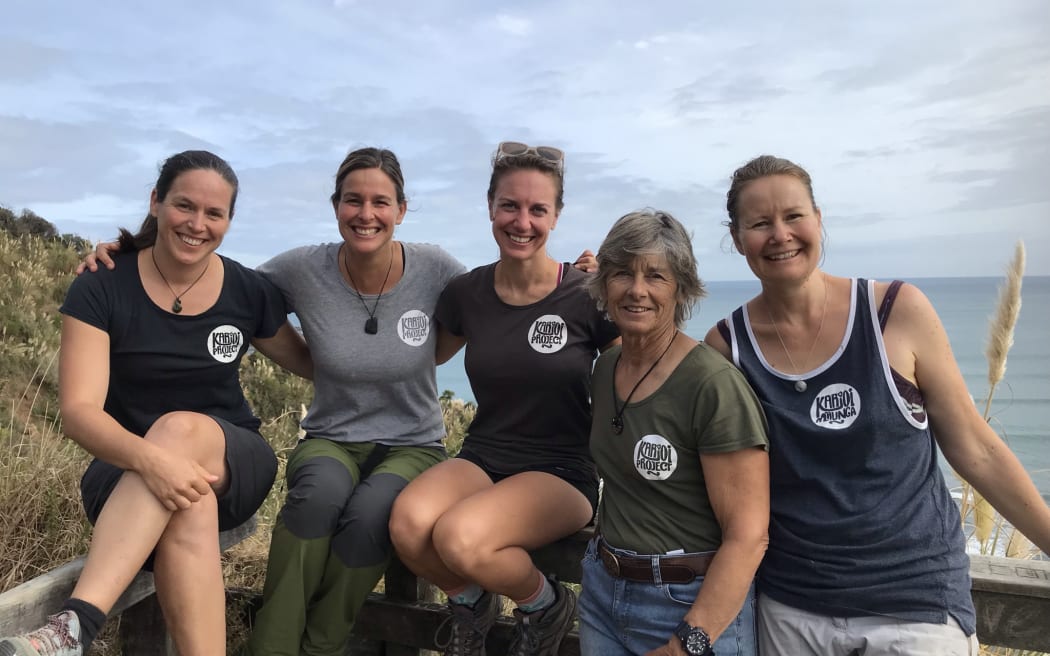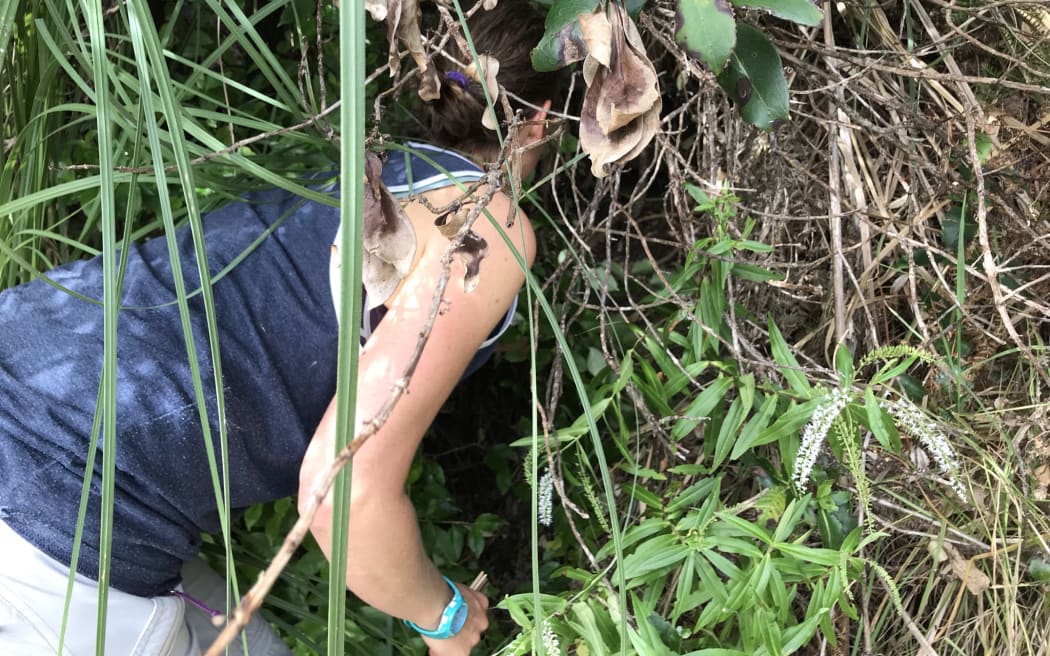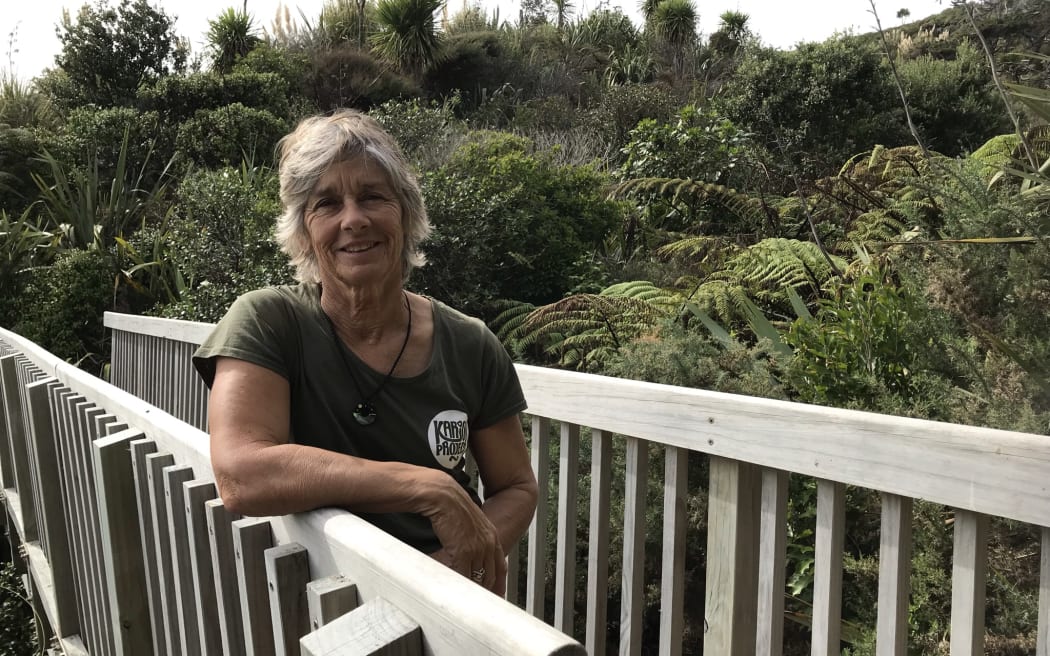In the great cycle of nutrients between the ocean and the land, seabirds are an important link. Burrowing seabirds transport nutrients from the sea into the costal bush where they nest. But many are having a hard time on the mainland coast due to predators.

From L-R. Isabelle Lance, Kristel van Houte, Amber Jones, Lynda Lim, Nic Callaghan. Photo: RNZ
Follow Our Changing World on Apple Podcasts, Spotify, Stitcher, iHeartRADIO, Google Podcasts, RadioPublic or wherever you listen to your podcasts.
This is the challenge that the ōi or grey-faced petrel in Whāingaroa Raglan is facing.
The bush-clad Karioi maunga, eight kilometers south-west of Raglan, is the most northerly forest on the west coast that connects all the way from mountain top to sea. In recent years the grey-faced petrel has been spotted digging burrows to nest along the coastline at the base of Karioi, but predators such as ferrets and stoats are taking a massive toll on both the chicks and adult birds.
This is what the Karioi Project team are taking action on.
What began as a small volunteer effort has grown to a project employing 12 people part time, including predator control rangers, educators, a backyard trapping hub coordinator, and a seabird ranger dedicated to monitoring the ōi.
Led by project manager Kristel van Houte, the aim is to protect the local biodiversity of Karioi, its ngahere, and the surrounding coastline. It focuses on predator control, both on the maunga and along the coast, with an emphasis ōi nest areas.

Nic Callaghan looks into the entrance of a well hidden ōi burrow. Photo: RNZ
The ōi is an oceanic seabird, dark black-brown in colour, with grey feathers at the base of the bill and throat.
They are one of the few burrowing petrels to still survive on the New Zealand mainland, in small colonies scattered around the upper North Island coast. Larger colonies are doing well on predator free offshore islands.
In the Karioi team, Nic Callaghan is the seabird ranger responsible for the monitoring of the burrows. The birds will return in late Autumn, find their mate (they are monogamous), and breed, with an egg laid around mid-winter. The eggs hatch in August or September, with chicks fledging between November and January. At the moment the project is monitoring around 50 burrows, but the numbers of chicks fledging are consistently low, due to the impact of predators.

Linda Lim, trapping volunteer with the Karioi project. Photo: RNZ
With an extensive education programme and backyard trapping hub, the team are working with the community to help restore this vital connection between the ocean and the land.
To learn more:
There are a number of Our Changing World episodes celebrating seabirds! Listen to:
- More seabirds on Mana island
- Seabird hotspot – the Poor Knights Islands
- Rediscovered – the New Zealand storm petrel
This episode contains a recording of grey-faced petrel at Lady Alice Island by David Boyle from Xeno-canto shared under CC BY-NC-SA 4.0.


